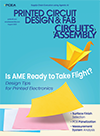
Talk isn’t cheap, but the absence of it could cost you even more.
Throughout my PCB career as a go-between for board buyers and manufacturers, I’ve often heard complaints from buyers that fabricators – domestic and offshore – ask too many engineering questions (EQs) after receiving an order. “Why can’t they just build the board?” buyers say.
This mystifies me. In my view, PCB vendor questions provide valuable feedback. They may indicate the vendor lacks all the required information to build the order. They also tell me the manufacturer is intent on gathering all the data necessary to do the job right.
I’d be more concerned if no EQs came from a vendor. A PCB has over 100 separate required manufacturing processes, almost all of which are unique to each customer. It would be surprising, even alarming, if everything in an order was absolutely clear, with no back-and-forth necessary.
Rather than argue with customers, if a buyer complains about too many EQs, I simply respond there is a direct correlation between the number of EQs and quality of the PCBs received. Then I add, “Let me see what I can do to limit the number of questions.”
I understand the delivery clock is ticking, and the customer wants the order as soon as possible. But who wants to populate boards with expensive components, only to have them fail at the end of the assembly line? PCB vendors want to build orders correctly. Their questions help protect their interests and those of their customers. It’s worth it to take the time to answer all questions completely.
Over the years, I’ve worked for a number of different companies, all of which had a variety of customers building an even wider selection of PCBs. Yet, the complaint about too many EQs came up more than anything else. It still does. After a while, I began to wonder whether the problem was not so much with the fabricators as with the buyers. Maybe purchasing and engineering personnel lack the training needed to properly relay all the information required to build a PCB.
Prior to sending to fabricators, files need to be checked, not only to ensure they have all required information on orders, but also that they fall within industry (and possibly company) manufacturing standards. Not all buyers have the expertise to do that. In addition, many companies lack a documented PCB fabrication specification that manufacturers can reference when they receive information that is incomplete or needs clarifying.
Does your board get the least attention of all the items on a bill of materials (BoM)? The PCB makes up 8 to 12% of the BoM cost, and it is the foundation of the manufactured product. When vendors ask engineering questions, they are acting in the buyer’s best interest.
Here are questions and comments I often see from PCB vendors. By answering them ahead of time, you’ll help speed your order through the manufacturing process:
- “Confirm PCB solder mask to be green in color.” Many older fab prints still in circulation do not specify solder mask color. That’s because PCBs were traditionally green. Today, boards come in a variety of colors, so fab drawings need to clearly state the color to be used.
- “Print states: Build to IPC Class 2. Is that IPC-A-600 or IPC-6012?” This simple question means a world of difference when it comes to the amount of testing and paperwork required. The customer might require all that additional paperwork to confirm the assembly meets its needs. If the proper paperwork isn’t with the boards at delivery, the assembled product might be useless. Be sure you answer this question. By the way, “Just build commercial” is not an acceptable answer, as both IPC-600 and IPC-6012 are commercial specifications.
- “Are X-outs allowed?” To save on PCB costs, some assembly operations can accommodate PCBs that are provided in array or panel format with X-outs – nonfunctional boards – while other assemblers cannot or will not accept X-outs. A corporate PCB fabrication specification spelling out customer preferences addresses this issue and saves time.
Surprisingly, many companies, including some well-known OEMs and plenty of EMS firms, do not have a corporate PCB fabrication specification that is unique to their operation or assembly needs. This document can be as concise as a few pages. It should outline everything from acceptable material types to desired metal finishes to final packaging and storage requirements. It should also include panelization instructions.
Corporate fabrication specs should answer most EQs. You might get specific queries about dealing with artwork tolerances, for example, or the need for a stack-up variance to permit controlled impedance. Those questions would have to be answered individually. Companies can save a great deal of time by creating fab specs and then ensuring they are fully understood within the firm and among the vendor’s personnel.
PCBs seem to be regarded today as a cookie-cutter commodity, despite being a highly customized product. Board buyers and program managers have sent the message that price is all that matters, with the level of service and quality provided by a PCB vendor a secondary consideration. They’ve had to fend for themselves when it comes to acquiring the specialized knowledge that would make them even better at buying PCBs and managing their vendor base.
Why would EMS companies or OEMs, especially those with ISO registration, not provide corporate training in buying the commodity that is the foundation of their assembly processes and one of their largest expenses? Good, open communication between buyers and vendors, along with some much-needed training, will boost PCB quality and delivery performance, and lower costs.
Greg Papandrew has more than 25 years’ experience selling PCBs directly for various fabricators and as founder of a leading distributor. He is cofounder of Better Board Buying; This email address is being protected from spambots. You need JavaScript enabled to view it..














